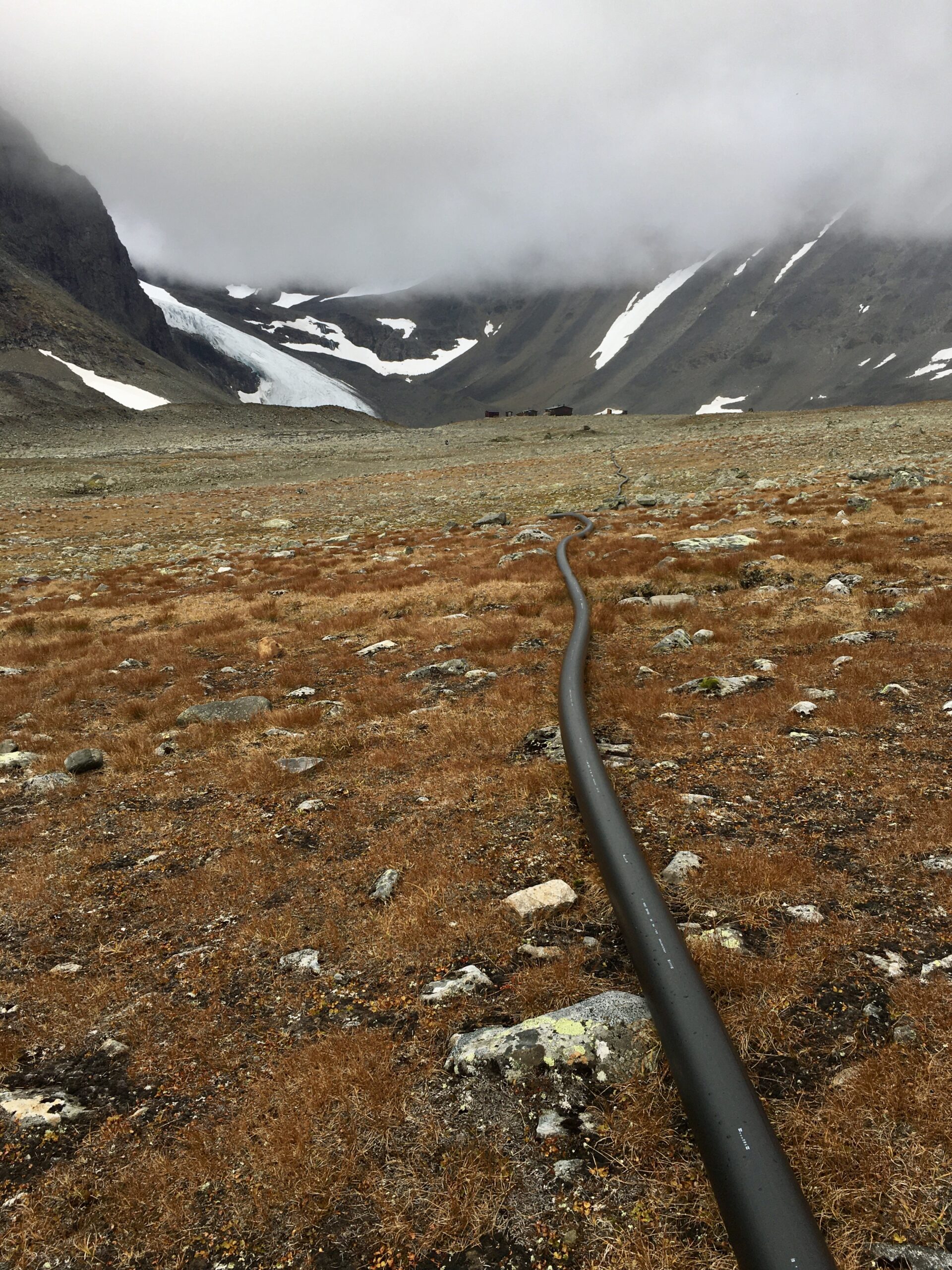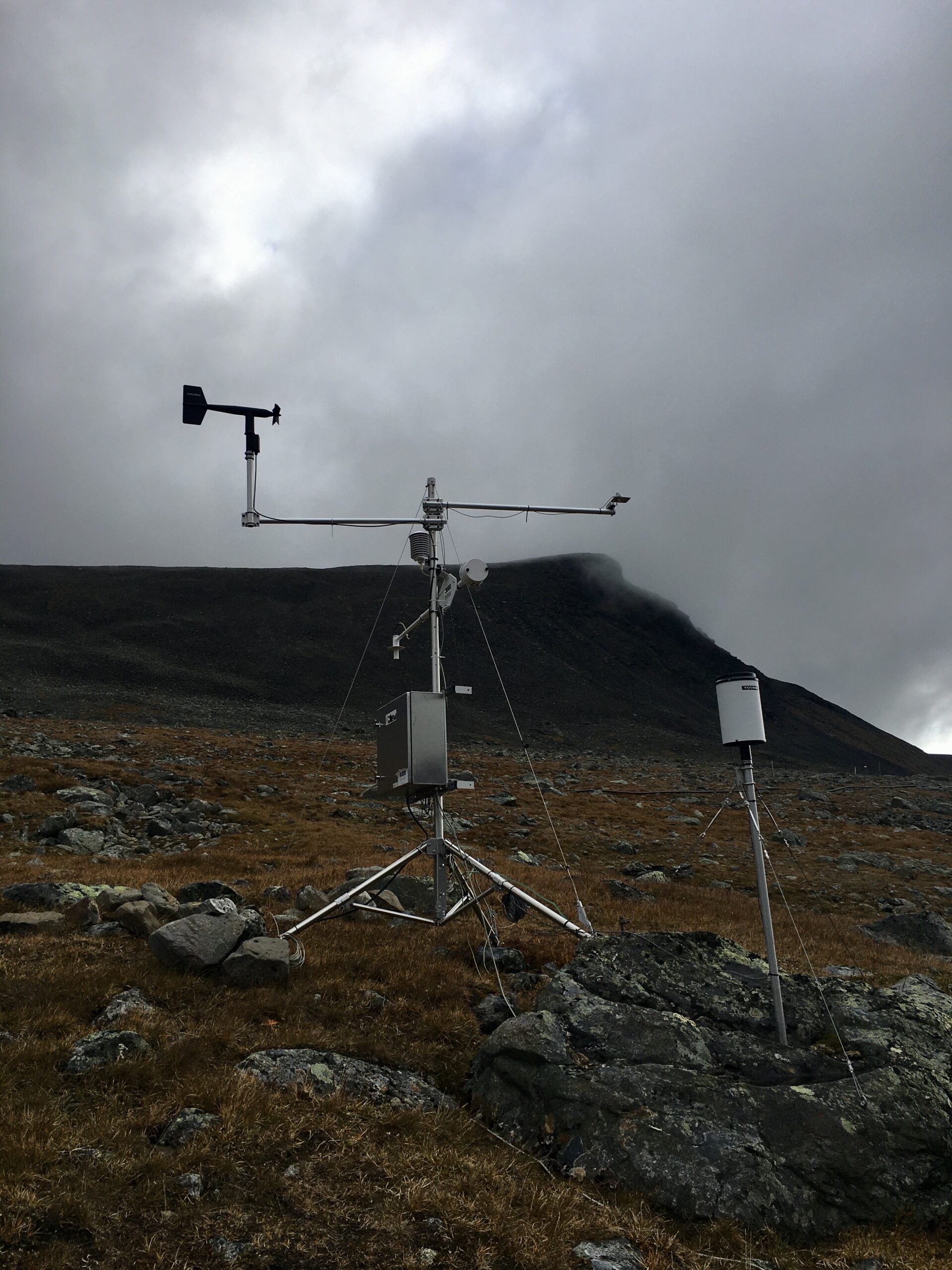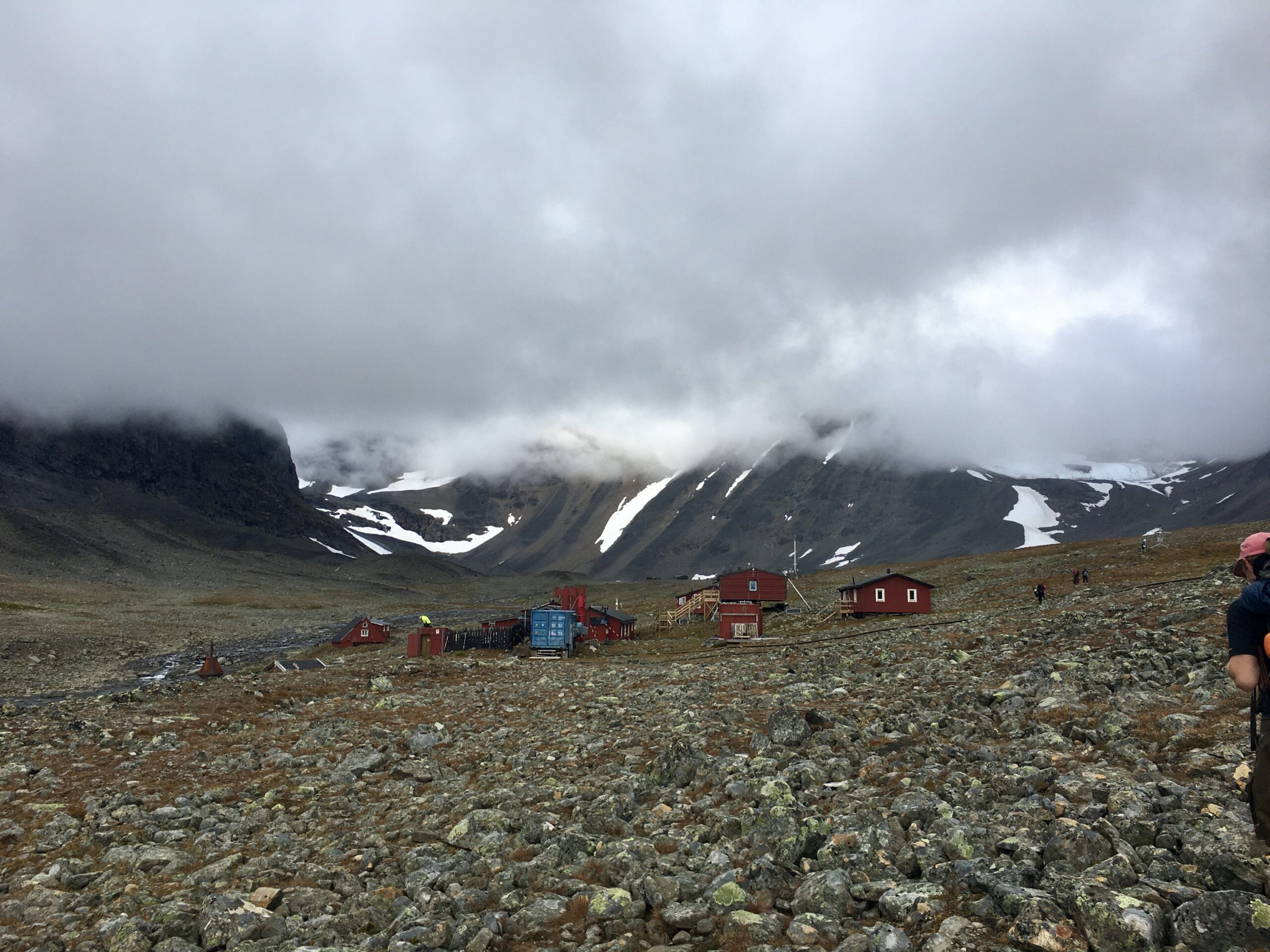Landscapes and Cables.
︎ Social transitions
︎ Ecological transitions
︎ Spatial transitions
︎ Un-built environments
︎ Built environments

The cable runs as far as the eye can see, to the top of Tarfala Valley, located in the very north of Sweden, near the border with Norway. Along the ground, the cable is a framing element, drawing our sight up to the mountains, the glacier and the low lying fog. These images together evoke the thoughts of the landscape, of nature, of the wilderness. The cable exists solely for the support of human activity in the valley, for the purpose of communication between the valley and the world beyond. It marks the presence of humans, the conquest of the landscape.
︎︎︎Tarfala Valley Glacier Research Station houses a project that poses great significance to our understanding of glaciers and by extension climate change. Built in the 1950’s, Tarfala Research Station is situated 100km west of Kiruna in northern Sweden and offers an unequaled opportunity to study sub-arctic high alpine environments. Storglaciären is one of the most thoroughly studied glaciers in the world – it peaks out to the right of the mountain on the left, slightly hidden by clouds. Therefore, the research station itself is a centre of knowledge production, where information is generated and organised, putting the space on the map with links reaching across the world. It allows us to monitor the glacier’s activity and the weather, generating more detailed information on the climate, and by extension the impact humanity has had on the climate.
The climate of this region is embodied by the glaciers, three of which meet in this valley – located 150km inside the Arctic Circle (Insert Map, Map Photos) There is substantial evidence to support the retreat of glaciers in response to global warming (Houghton et al, 2001). Thus far, the 21st century has been the warmest on record, with rapid changes being observed around the world in the cryosphere – the frozen component of the earth’s systems in which snow, ice sheets, permafrost and glaciers are bound (Thorsteinsson et al, 2013). The widespread retreat of glaciers is expected to continue, where changes to the vast constitution of the glacier become strikingly visible. The seasonal cycle sees the station buried in winter, under snow that reaches down the valley. By the end of the brief summer season in July-August the snow and ice have retreated as much as they will, for that year. In recent years, the retreat ended further back then years before – climate change made visible?

Tarfala Valley existed before, and will persist beyond the current scientific purposes. This version recorded through the station’s existence is one version of history, that the knowledge recorded in the station is only an element of what has preceded the organisation – the station, the cables, the weather vane – of the landscape. One such narrative is shaped by recent climate history and framed by the research that is carried out in the station. The team of international researchers come from afar for the season to carry out research. In taking knowledge generated at the research station, Tarfala Valley is made visible on one version of the map, a map for the scientific community, as it exists at this particular time.
With the cable there is a semblance of certainty, that the periphery is really not so far away. In situ, ‘weather’ can descend in moments, which no amount of cables can control or change. It emphasises a reality that the conquest of the landscape is superficial, and constantly in flux. A materiality placed on the landscape, is made visible in the summer months without snow seen in the cinema. It sits on the landscape—where for a myriad of reasons they are normally buried in urban environments—yet here the cable cannot be buried as there is snow on the ground ten months of the year and below the surface is permafrost. In contrast to the untouched expanse, the vast hinterland, they are an image of determination of the landscape, where the paradox of humans and nature converges.
Elements of interference (human activity) in the landscape are the combined result of industrialisation, modernisation, the advent of technologies and humans desire to understand the landscape and the weather. The hinterland undergoes many processes of extraction, production, reinvention. The hinterland is a contested space between nature and humanity, yet it is often classified as an expanse—‘there is nothing there’ we say. This wilderness exists separate from urbanisation patterns, instead it holds memory, of the flora and fauna, of culture, of tradition, of production and agriculture. Only fragments may be visible, but it does not mean they don’t exist in symbiosis, and in conflict.
In this case, the station, cable and weathervane serve to understand the changing activity of glaciers and the weather, and by extension climate change, in their generation of knowledge. They are tools for measuring the climate—the cable and the windvane—are motifs of the anthropocene epoch, part of a constant effort to generate data and collect information. The weathervane highlights societal interest in the relentless ‘knowing’ of meteorological conditions. The cable is fundamental to the processes of living in a connected world and, marks the emergence of data—a confluence of varying elements to be recorded and transported beyond the hinterland.


The collection of this data is however incredibly important, a crucial node in the exploration, research and understanding of our landscapesThe consolidation and expansion of academic research tied to advancements in technology, allows for cli. mate data to be used in numerous ways. The knowledge produced is critical for societal engagement with climate change through research. In creating a globalised network of research and data, the reality of climate change can be communicated.
Yet, it also presents a contradiction between humans and sustainability, and humanity and nature. The universal framing of sustainability is that further human-centric policies and systems can offer solutions that alleviate climate change. We collect data to understand our impacts, but the answers allow us to escalate our energy use and production, outsourcing to green energy. Information bypasses the terrain and the climate, the cable becoming an infrastructural development that is an integral node in a chain of flows. These policies and systems are thus fed by connections to remote places, henceforth existing without context to the landscape itself. The sustainability question presents a paradox—without reframing the issue our ways of intervening only perpetuate the issue.
This thinking is situated in the underlying narrative that humans are above the natural world, that they have made the crisis of climate change, thus their continued efforts in sustainability from this principal position is the only solution. In stages, humans have dominated the landscape for energy or production, and now we are looking to embed in them again albeit under a different veil. The questions asked are not how do we reduce our output but instead how do we feed this insatiable urge to fix what we have altered.Therefore, as we try more and more to understand the weather and climate, we are generating more and more data. The landscape is dominated by many forms of production—raw material, minerals, agriculture – and now data is becoming the next.
Humanity has elevated itself above nature in the hurry to become sustainable, without questioning its existence as a component of nature. The land that went untouched for centuries has been co-opted in the human (desire) for resources and knowledge – through adventure, exploration and exploitation. We situate ourselves outside of nature, which as an entity is set apart from urbanity and society. We exist only as a species in nature. The cable embodies our enforced duality – humans in nature and humans above the natural world.It is our attempt at controlling (knowing) the uncontrollable.
References
Houghton, R. A., Hackler, J. L., & Cushman, R. M. (2001). Carbon flux to the atmosphere from land-use changes: 1850 to 1990. Oak Ridge: Carbon Dioxide Information Center, Environmental Sciences Division, Oak Ridge National Laboratory. Thorsteinsson, T., Jóhannesson, T., & Snorrason, Á. (2013). Glaciers and ice caps: Vulnerable water resources in a warming climate. Current Opinion in Environmental Sustainability, 5(6), 590-598. Tarfala Station Website: https://www.natgeo.su.se/english/tarfala-research-station
LABLAB
ROSENLUNDSGATAN 38
118 53 STOCKHOLM